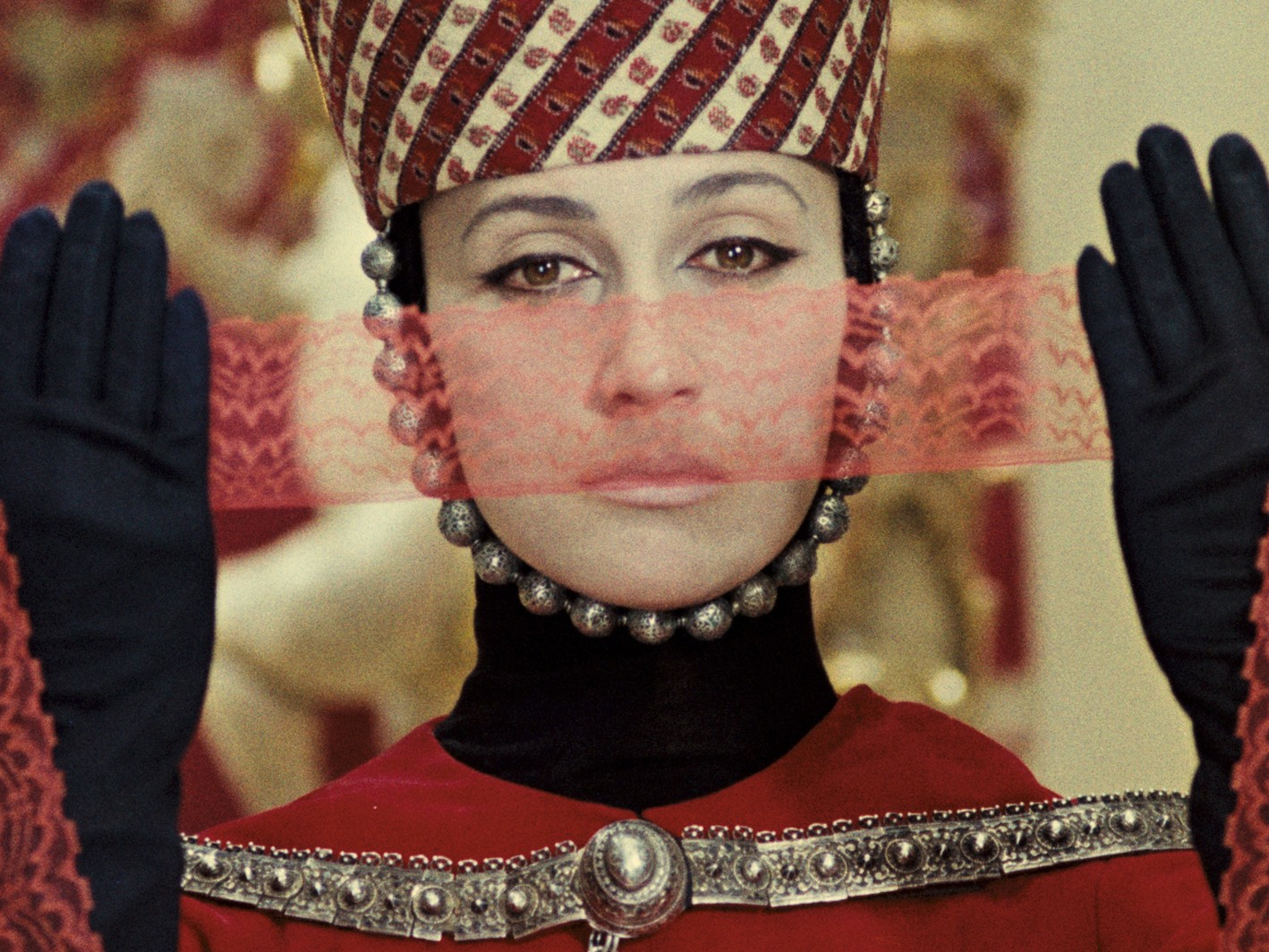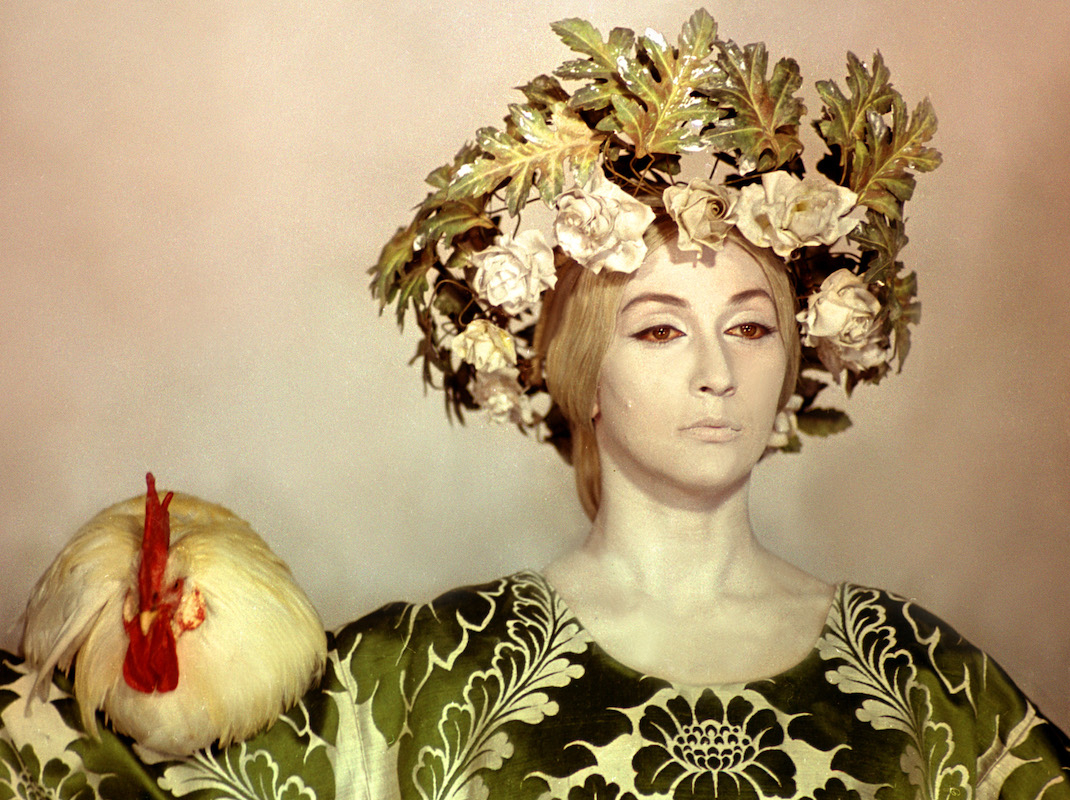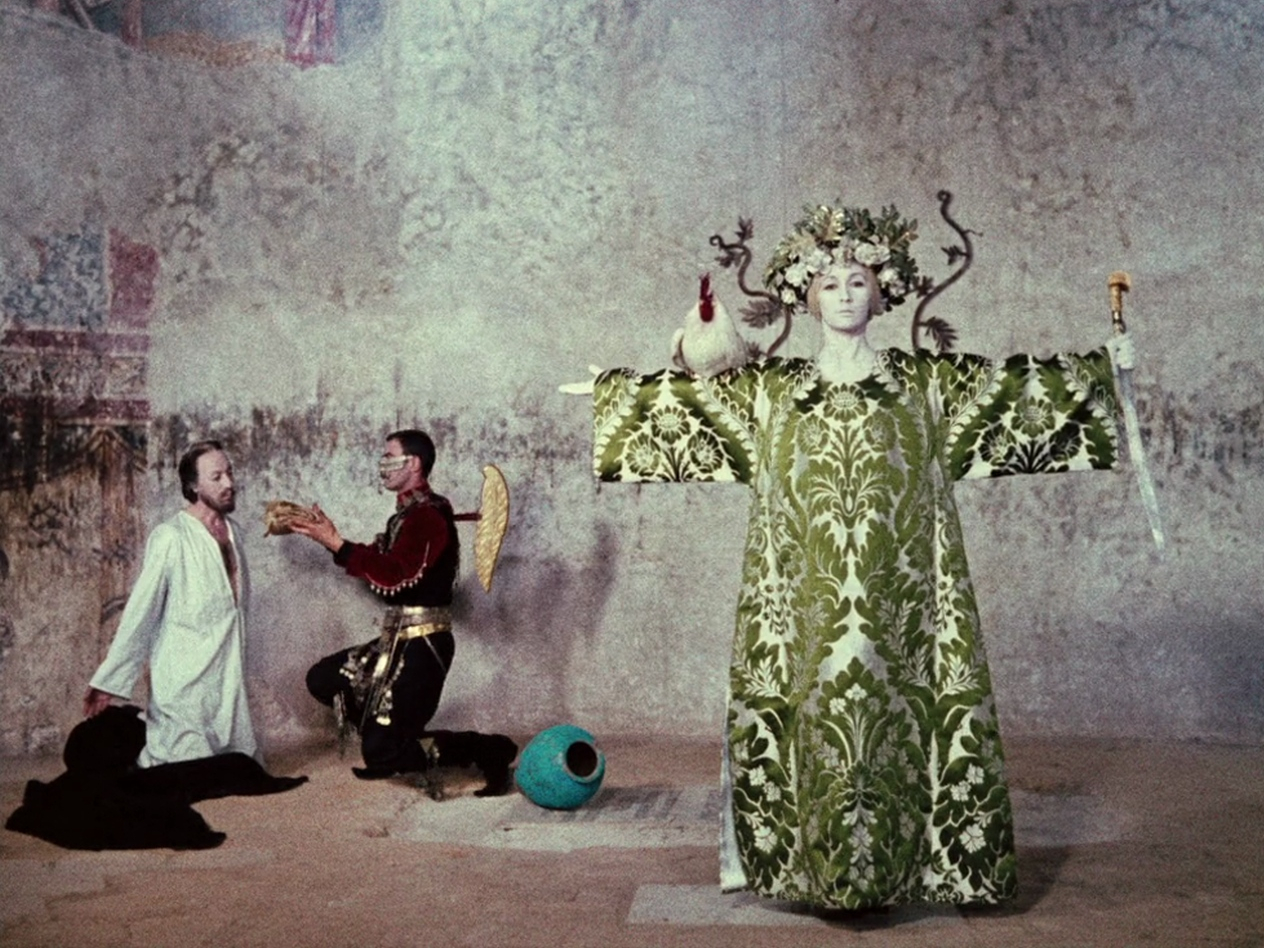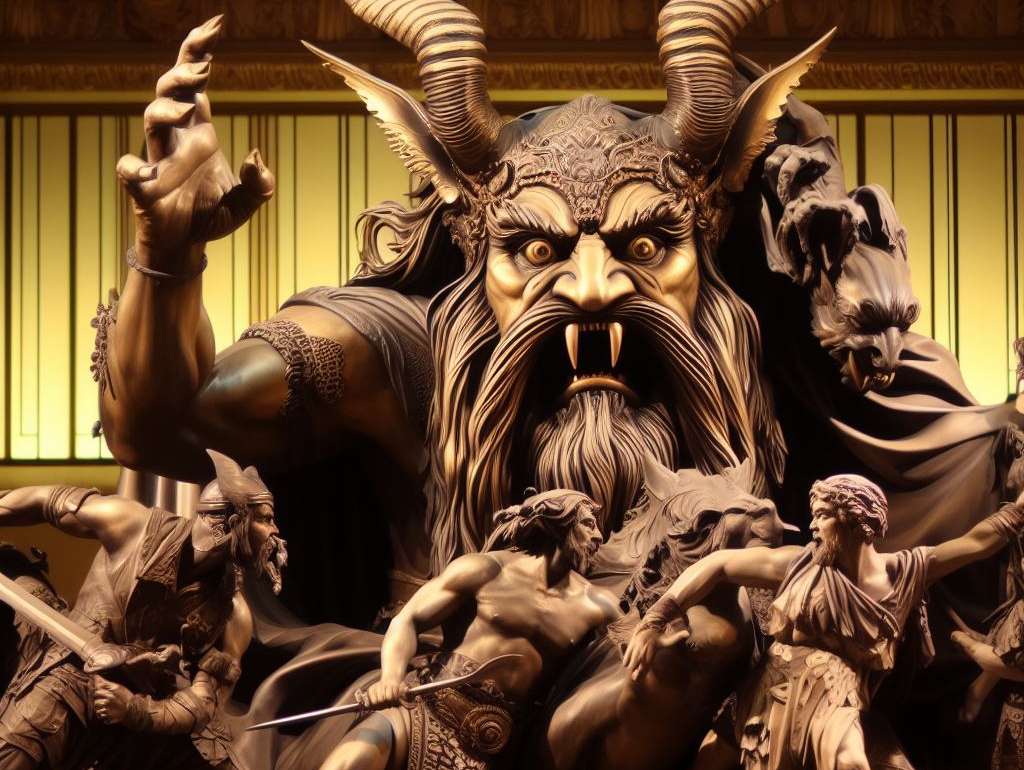Are you looking for an escape from the dreariness of modern consumer life? Look no further than The Color of Pomegranates – a visually stunning film that invites you to immerse yourself in a world of pure artistry and imagination.
With its exploration of Armenian culture, mystical spirituality, and poetic imagery, this film defies categorization and continues to captivate audiences after more than five decades.
The Color of Pomegranates was directed by Sergei Parajanov. The film, which was released in 1969, is considered one of Parajanov’s most notable works. Parajanov was a Soviet-Armenian filmmaker who gained worldwide recognition for his unique and visually stunning films. His films were often characterized by their poetic quality, and explored themes such as culture, identity, and the human condition.
On first viewing, people are often mesmerized by the aesthetics of The Color of Pomegranates because of its stunning visual style and sense of mysticism. Chances are it’s like nothing they’ve ever seen before. The film is a visual feast, with every frame carefully crafted to create a sense of beauty. The use of vivid colors and intricate set designs all contribute to the film’s dreamlike atmosphere.
The film is filled with symbols and metaphors that speak to the human condition. Conventional narrative structures and linear forms of storytelling are rejected. Rather, the film is composed of a series of loosely connected images and vignettes, using tableaux and static shots to create a sense of timelessness and otherworldliness.
The story of Sayat-Nova
The Color of Pomegranates is a biographical film about the life of the 18th-century Armenian poet and troubadour Sayat-Nova. It tells his story through a series of images that explore the themes of love, death, and spirituality.
The film begins with a young boy, Sayat-Nova, being taken to a monastery where he is educated and trained in music and poetry. As he grows older, he becomes a celebrated poet and musician, known for his ability to capture the beauty and melancholy of life in his works. Parajanov once said of Sayat-Nova, “His songs have an incomparable lyricism and extraordinary music, and their depth and philosophical significance are no less impressive.”
Multiple actors portray Sayat-Nova throughout different stages of his life, including the striking Sofiko Chiaureli. Chiaureli takes on the roles of both Sayat-Nova’s youthful self and his lover. Parajanov’s decision to cast Chiaureli in these dual roles draws inspiration from Persian miniature paintings, known for depicting couples with striking similarities. This artistic choice not only establishes a visual parallel but also captures the essence of Persian miniature aesthetics.
Parajanov’s admiration for Sayat-Nova is evident in the way he weaves the poet’s work throughout The Color of Pomegranates, using imagery and symbolism to capture the spirit of his poetry on film. The film is not a biographical account of Sayat-Nova’s life, but rather a poetic exploration of his themes and ideas, conveyed through a series of visual tableaux that draw on the cultural and historical context of the poet’s work.
Throughout the film, we see various moments from Sayat-Nova’s life, including his time as a court musician, his relationships with women, and his eventual decision to become a monk. The poet’s romantic encounters are highly stylized, with an emphasis on beauty, sensuality, and transcendence.
The film was shot entirely on location in Armenia, and a wide range of locations, including monasteries, palaces, courtyards, and gardens, each with their own distinct character and atmosphere. The set designs are heavily influenced by traditional Armenian and Caucasus art and crafts, with elaborate costumes, textiles, and decorative elements used to create a sense of authenticity and cultural richness.
One of the most visually captivating locations in the film is the Haghpat Monastery, a UNESCO World Heritage Site nestled in northern Armenia. Dating back to the 10th century, this monastery plays a significant role in the film as the place where Sayat-Nova receives his education and training.
“My heart is a battlefield, torn apart by love and desire. But I would rather die a thousand deaths than live without the one I love.” Sayat-Nova
Expression of national consciousness

Parajanov, who was born in Tbilisi, Georgia, but had Armenian and Georgian ancestry, was deeply influenced by Armenian culture and heritage, and his films are often seen as expressions of Armenian culture and national identity.
The pomegranate, which is a recurring motif in the film, is a symbol of life and fertility that has deep roots in Armenian mythology and folklore. The film also features a range of other Armenian symbols and motifs, including the use of the color red, which represents the blood of martyrs and is a symbol of sacrifice and passion in Armenian culture. Additionally, the film’s focus is on the life and work of Sayat-Nova. Sayat-Nova is a beloved figure in Armenian culture, and his poetry and music continue to be celebrated and performed today.
If only filmmakers in the West were willing–allowed?–to express a similar attachment to their own national identity. One might ask whether Western culture, with its emphasis on reason and materialism, is capable of producing works of art with the same sense of spirituality and mysticism as The Color of Pomegranates. In an age of cynicism and scepticism, it can be difficult for some to fully embrace the symbolism and metaphors that are so integral to Parajanov’s film. However, the enduring popularity of The Color of Pomegranates suggests that there is still a deep human hunger for art that can transport us to a realm beyond the mundane. Despite its suppression in the West, the search for spiritual transcendence remains a universal human impulse that will continue to inspire the right kind of artists.
“The pomegranate is the crown jewel of the garden, a symbol of abundance and fertility.” Sayat-Nova
Striking symbolism

Sergei Parajanov, renowned for his unconventional visual language, employed striking symbolism and the use of tableaux in The Color of Pomegranates. This poetic and symbolic journey through the life and art of Sayat-Nova captivates you with its unique structure. The film unfolds through a series of meticulously crafted visual motifs, each conveying a specific story or mood. By presenting each image as a standalone work of art, Parajanov encourages contemplation.
Parajanov’s masterful control of his aesthetic vision is evident in the elaborate costumes and set designs inspired by Armenian decorative arts, showcased in the static, tableau-like frames. The costumes and set designs are also meticulously crafted, with attention paid to every detail to create a sense of authenticity and cultural richness. In fact, Parajanov designed some of the costumes to get just what he wanted.
The film’s use of color is particularly striking, with each tableau presenting a different colour palette that creates a mood and atmosphere unique to that scene. Gold and other metallic hues represent wealth, power, and divinity. The use of gold is especially prevalent in the scenes depicting the poet’s encounters with figures of authority, as well as in the sequences that depict religious rituals or ceremonies.
The recurring symbolism of pouring water, pomegranate juice, and other liquids in the film represents an initiation into a new spiritual realm, signifying Sayat-Nova’s path to self-discovery and spiritual awakening. Similarly, the massage and cleansing scenes go beyond their literal representation, symbolizing healing, rejuvenation, and the shedding of burdens.
The film delves into ancient ritual practices through the portrayal of chicken and sheep sacrifices. These rituals symbolize the act of offering life and shedding blood as a means of spiritual devotion and communion. Moreover, they represent the sacrifice of earthly desires and attachments in the pursuit of higher spiritual realms.
A significant thematic exploration in the film is the transformation that occurs following the sacrifice. We witness the journey from slaughtered sheep to the preparation of wool, and finally, the knitting process. This progression explores profound themes of life, death, transformation, and the cyclical nature of existence. It highlights the interconnectedness of these elements and invites contemplation on the deeper meanings of these processes.
Through these powerful symbols, The Color of Pomegranates invites viewers to contemplate the interconnectedness of art, spirituality, and the human experience, inspiring a profound appreciation for the intricate layers of meaning woven into Parajanov’s vision.
Influential imagery and enduring impact

The Color of Pomegranates has had a significant impact on cinema, visual art, and popular culture. Its influence can be seen in the work of filmmakers such as Terrence Malick, Andrei Tarkovsky, and Alejandro Jodorowsky.
The film’s influence extends beyond the realm of cinema and resonates in popular culture, particularly in music videos. The film’s tableaux style and its use of striking and condensed imagery are well-suited to the medium of music videos. Madonna’s “Frozen” music video draws heavy inspiration from The Color of Pomegranates, incorporating similar use of color, imagery, and symbolism to create a visually captivating experience. Similarly, REM’s “Losing My Religion” music video pays homage to the film, as does Lady Gaga’s “Alejandro” music video.
The imagery of the spinning lute in The Color of Pomegranates also evokes parallels with director Derek Jarman’s visual style in The Smiths’ music video for “The Queen is Dead.”
If you enjoy The Color of Pomegranates, the following films have a similar aesthetic and mood:
-
Mirror (1975) by Andrei Tarkovsky is a highly poetic and personal film that uses vivid imagery and dreamlike sequences to explore themes of memory, identity, and loss.
-
In the Mood for Love (2000) by Wong Kar-wai tells the story of a forbidden love affair in 1960s Hong Kong and uses a distinctive color palette to create a haunting and sensual mood.
-
The Tree of Life (2011) by Terrence Malick is a meditative exploration of life, death, and the mysteries of existence.
-
The Holy Mountain (1973) by Alejandro Jodorowsky is a surreal and hallucinatory journey through the psyche of a man seeking enlightenment.
Andrei Tarkovsky and Sergei Parajanov were friends and mutual admirers of each other’s work during the Soviet era. They both shared a love of art, poetry, and cinema, and similar filmmaking styles.
The perils of Soviet cinema | Political prisoner
Sergei Parajanov was imprisoned by the Soviet authorities in 1973 on charges of homosexuality and "dealing in illegal antiques." These charges were widely seen as politically motivated, and were used as a pretext to silence him and suppress his artistic output. Parajanov was eventually released from prison in 1977, following a long campaign by his supporters both within the Soviet Union and internationally. Tarkovsky was a vocal supporter of Parajanov during the latter's imprisonment in the early 1970s, and spoke out publicly in his defense. Parajanov was eventually released from prison in 1978, and Tarkovsky even helped to organize a screening of his film The Color of Pomegranates in Italy in the same year.
Surrender to the magic
In a world often marred by ugliness, stupidity, and banality, The Color of Pomegranates offers a captivating escape into a realm of wonder. Through its poetic imagery, enchanting music, and mesmerizing tableaux, this film reminds us of the power of art to transform our lives and connect us to something greater than ourselves.
If you are in search of solace from the mundane, surrender to the magic of The Color of Pomegranates and immerse yourself in the beauty and mysticism of Parajanov’s cinematic marvel.




